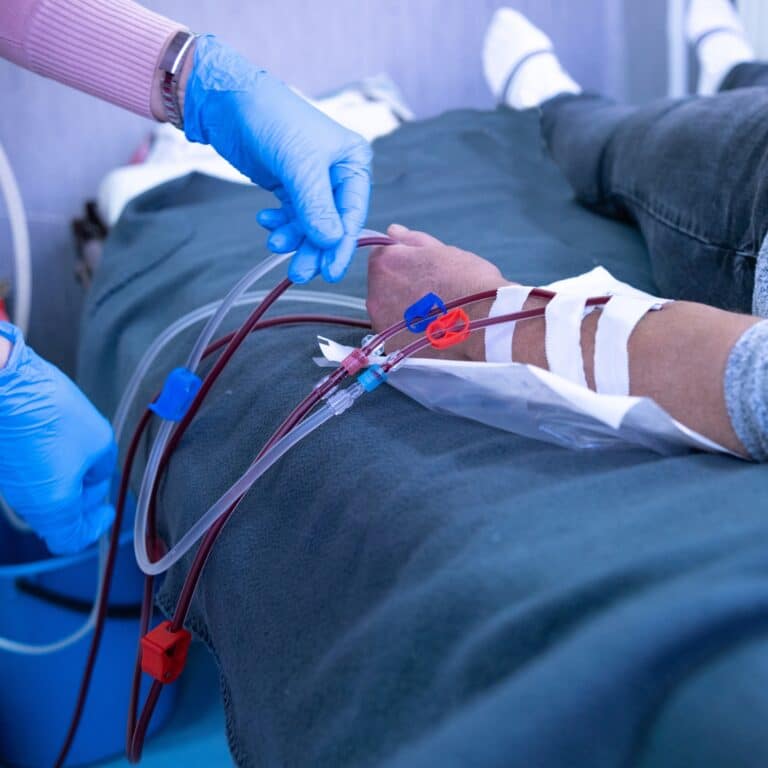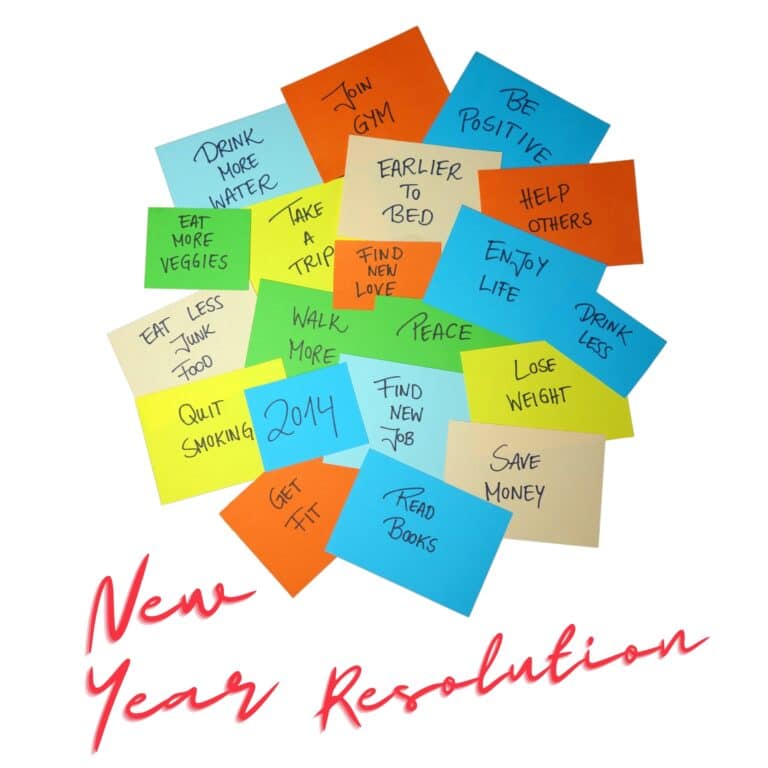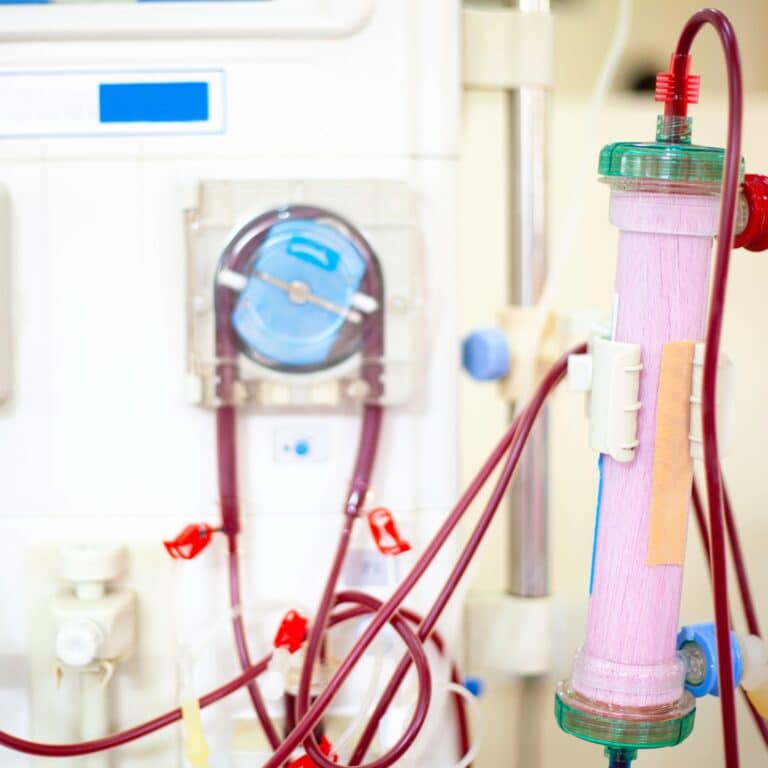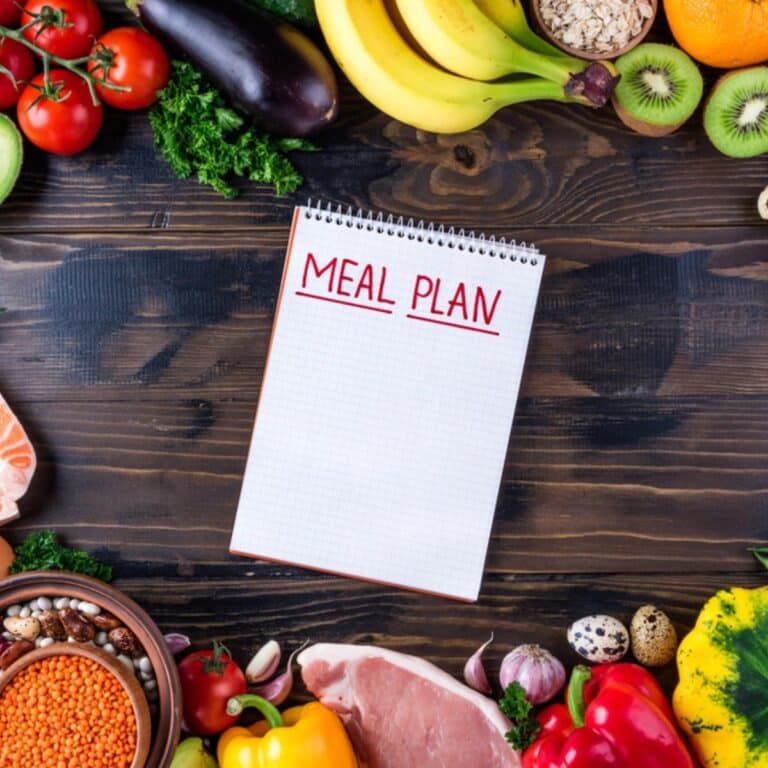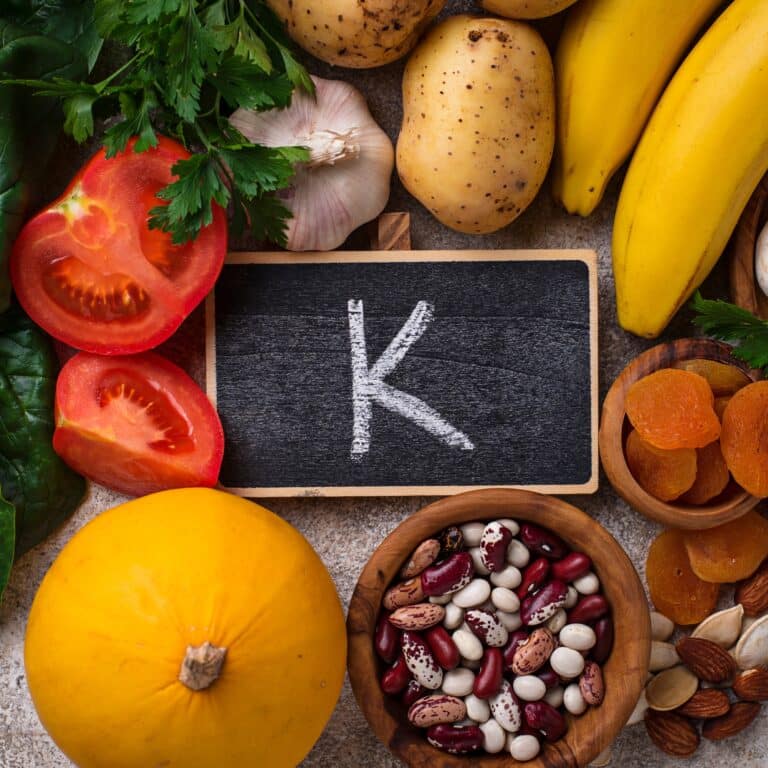Managing Renal Diet Limits
Like most things in life, living with renal diet limitations is largely what you make it out to be. Some people consider this diet highly restrictive. However, if you take a few moments to explore your options, you just might discover that there are many food options still available to you.
More than you may have realized at first glance. Don't give up on eating for pleasure. It's still very much possible despite perceived renal diet limitations. These tips will help you make the most of the renal diet limitations you are faced with, so that you can enjoy food as part of your daily routine.
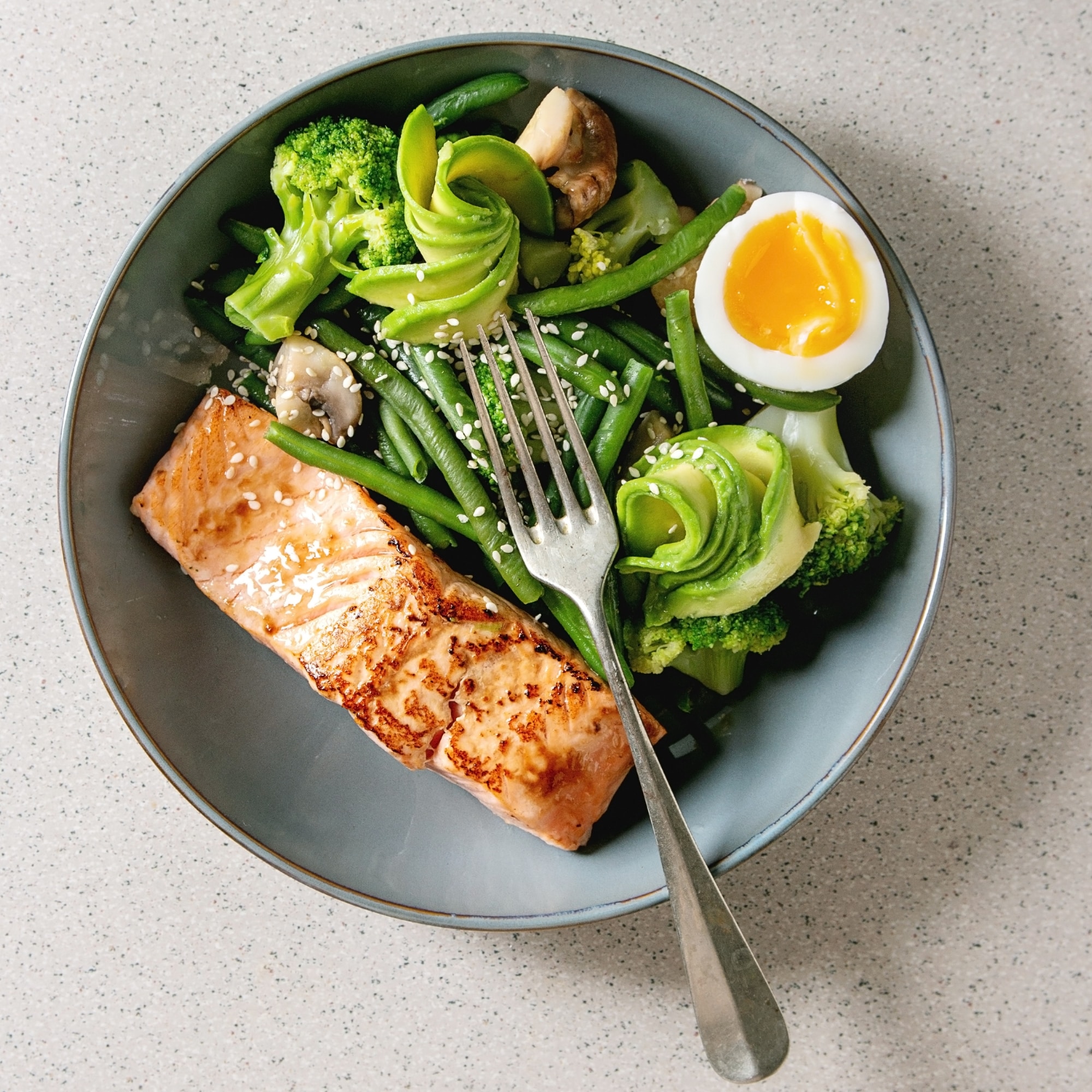
Jump to:
- Key Takeaways
- Renal Diet Basics
- Understanding Sodium Restrictions in Renal Diet
- Adjusting Protein Consumption for Kidney Health
- Managing Phosphorus Intake in Renal Diets
- Regulating Potassium Levels in Renal Diet
- Incorporating Heart-Healthy Foods for Renal Diet
- Developing a Routine for Effective Dietary Management
- The Challenge of Starting a New Renal Diet
- Embracing Positivity in Managing Renal Diet Limits
- Frequently Asked Questions
- Sticking To Your Renal Diet Limits Will Help You In The Long Run
Key Takeaways
- Establishing a routine is vital for managing food restrictions, medication, and water intake in a renal diet.
- Use fresh ingredients to add flavor and nutrition while avoiding grazing and drinking during meal prep.
- Maintain a positive mindset by focusing on exploring new food options and recipes rather than dwelling on limitations.
- Consistency is key in sticking to a renal diet, helping you gradually adjust to healthier eating habits.
- Look for renal diet-friendly versions of your favorite foods to continue enjoying your meals within the limitations of the diet.
For More Recipes and Ideas --->> Get Your Free Meals and Recipes That Are Perfect for Pre-Dialysis Diets, Pre-Dialysis with Diabetes, or Dialysis Diets.
Renal Diet Basics
Understanding the fundamentals of a renal diet is foundational in managing Chronic Kidney Disease. Here, we provide a comprehensive overview of CKD, shedding light on why a renal diet is essential in the context of this disease.
We'll delve into the intricacies of this specialized diet, exploring its critical role in mitigating complications and preserving kidney function. From dietary restrictions to nutrient optimization, these insights will empower you to make informed choices for a healthier life while living with CKD.
Chronic Kidney Disease Overview
Chronic Kidney Disease is a progressive medical condition characterized by the gradual deterioration of kidney function over time. It is typically a silent disease, with symptoms often not manifesting until the disease has advanced significantly. CKD can result from various underlying factors, including high blood pressure, diabetes, autoimmune diseases, and genetic predisposition.
The kidneys' primary role is to filter waste and excess fluids from the blood, regulate blood pressure, and maintain electrolyte balance. As CKD progresses, these functions become compromised, leading to a buildup of toxins in the body and imbalances in essential bodily functions.
Effective management of CKD involves early detection, lifestyle modifications, medication, and, in severe cases, dialysis or kidney transplantation. Regular monitoring and adherence to a renal diet are crucial for preserving kidney function and overall well-being.

Why Is Renal Diet Necessary?
A renal diet is essential for individuals with Chronic Kidney Disease because it plays a crucial role in slowing disease progression, managing symptoms, and preventing complications. CKD impairs the kidneys' ability to filter waste and regulate fluid and electrolyte balance effectively.
Without dietary adjustments, waste products can accumulate in the blood, causing complications like high blood pressure, fluid retention, and electrolyte imbalances. A renal diet helps control these issues by limiting the intake of specific nutrients such as sodium, potassium, and phosphorus. Additionally, it manages protein intake to reduce the burden on the kidneys.
Properly managed, a renal diet can help delay the need for dialysis or kidney transplantation due to kidney failure, improve overall health, and enhance the quality of life for individuals living with CKD.
Understanding Sodium Restrictions in Renal Diet
Sodium or salt is linked to kidney disease and hypertension. This could also lead to fluid retention in the body, thus causing your blood pressure to shoot up and your extremities to swell.
In your CKD diet, you need to limit your sodium intake to 1500 milligrams per day. Avoid using extra salt in your renal diet, and also avoid processed foods because they are very high in sodium.
Sodium in Packaged Foods
Packaged and processed foods are notorious for their high sodium content, posing a significant challenge for individuals on a renal diet that requires strict sodium limitation, such as those with Chronic Kidney Disease.
It's crucial to shop smartly by carefully examining food labels. Avoid or minimize foods like canned soups, instant noodles, processed meats (e.g., bacon, ham, sausages), frozen meals, canned vegetables, and salty snacks (chips, pretzels).
Sauces and condiments like soy sauce, ketchup, and salad dressings can also be sodium culprits. Carbonated drinks, including colas, are sodium-laden and should be avoided.
Instead, prioritize fresh fruits and vegetables, lean meats, poultry, and fish, and choose sodium-free or low-sodium versions of canned goods. Cooking from scratch with herbs, spices, and sodium-free seasonings allows for greater control over sodium intake. Gradually reducing salt while gradually acclimating taste buds to lower sodium levels is essential for effective sodium management on a renal diet.
Reducing Sodium in Cooking
Reducing sodium in cooking is essential for individuals on a renal diet, particularly for those managing conditions like Chronic Kidney Disease. Here are strategies to cut down on sodium while maintaining flavor:
- Use Fresh Ingredients: Start with fresh fruits and vegetables, lean meats, poultry, and fish, which naturally contain lower levels of sodium compared to processed counterparts.
- Limit Salt: Gradually reduce the amount of salt used in recipes. Over time, your taste buds will adjust to lower sodium levels.
- Rinse Canned Foods: Rinse canned vegetables, beans, and other high-sodium foods under running water to remove excess salt.
- Choose Sodium-Free Seasonings: Opt for herbs, spices, garlic, ginger, lemon, and vinegar to enhance flavor without sodium. Experiment with various combinations for creative, tasty dishes.
- Homemade Broths and Sauces: Prepare homemade broths, stocks, and sauces to control sodium content. Use unsalted or low-sodium varieties.
- Read Labels: When using packaged ingredients, select low-sodium or sodium-free versions and carefully read food labels to identify sodium content.
- Avoid High-Sodium Condiments: Be cautious with condiments like soy sauce, ketchup, and salad dressings, as they can contribute significant sodium. Choose low-sodium alternatives or make your own.
By adopting these practices, individuals on a renal diet can enjoy flavorful meals while effectively reducing sodium intake, promoting kidney health, and preventing complications associated with excess sodium consumption.
Adjusting Protein Consumption for Kidney Health
The body needs protein in order to build muscles, repair tissues, and fight infections. However, when the body breaks down protein, it also releases urea, a waste product that usually goes out in the urine. Since your kidneys are no longer functioning well, there is a danger that urea might not be properly excreted by the body.
Therefore, a CKD diet will help prevent urea overload in the kidneys. You need to limit your protein intake by cutting down high protein foods such as fish, meat, poultry, dairy, and eggs. Your nutritionist will tell you how much protein your condition warrants in your CKD diet.
Balancing Animal and Plant-Proteins
Balancing animal and plant proteins is crucial when managing protein intake for non-dialysis Chronic Kidney Disease patients. Animal proteins provide complete amino acids but are often higher in phosphorus and potassium, necessitating moderation.
Choose lean cuts of meat, skinless poultry, and fatty fish for high-quality animal protein sources. Dairy products should be low-fat or fat-free to limit saturated fat and phosphorus.
Plant proteins, like beans, lentils, and tofu, are lower in phosphorus and potassium but may lack some essential amino acids. Combining different plant protein sources can help fill these gaps. Focus on variety to maximize nutrient intake.
Also, monitor portion sizes to avoid overconsuming phosphorus and potassium. Balancing animal and plant proteins allows people with kidney disease to maintain protein intake while effectively managing potential complications associated with renal disease.
Protein Portion Size Importance
It's not just what type of protein you eat, but how much you consume that plays a crucial role in maintaining your health. Consuming protein-rich foods in moderation is key, especially if you're on dialysis. Too much can be burdensome on your kidneys.
Your aim should be diet sustainability, incorporating enough proteins without causing harm. It's important to understand portion sizes and the impact they have on your overall health. Nutritional counseling can provide guidance appropriate for your specific needs.
Considerations for those undergoing dialysis are more complex due to their differing needs since the dialysis process may cause protein losses. Achieving balance may seem challenging at first glance, but with proper knowledge and consultation, it becomes attainable.
Managing Phosphorus Intake in Renal Diets
Phosphorus can build up in your blood, and your kidneys might not be able to get rid of it. This may cause your bones to lose calcium and weaken. Foods that are high in phosphorus content and should be limited in your CKD diet include dairy products, nuts, whole grains, beer, cocoa, and cola drinks.
Avoiding Phosphorus-Added Packaged Foods
Avoiding phosphorus additives in packaged foods is essential for individuals with Chronic Kidney Disease to manage their phosphorus intake effectively. Many processed and packaged foods contain phosphorus additives, often listed on ingredient labels as "phos" or "phosphate." These additives are used for various purposes, including as preservatives, stabilizers, and leavening agents.
To reduce phosphorus intake:
- Read Labels: Carefully inspect ingredient labels when shopping. Look out for phosphorus-containing additives like sodium phosphate, calcium phosphate, and phosphoric acid.
- Choose Fresh Foods: Opt for fresh, whole foods whenever possible, as they are naturally lower in phosphorus. Fruits, vegetables, and lean meats are excellent choices.
- Limit Processed Foods: Minimize the consumption of processed and convenience foods, which are more likely to contain phosphorus additives.
- Cook from Scratch: Preparing meals from scratch allows you to have better control over ingredients and reduce phosphorus additives' presence in your diet.
By being vigilant about phosphorus additives, CKD patients can better manage their phosphorus levels and reduce the risk of complications associated with excessive phosphorus intake.
Choosing Low-Phosphorus Foods
Selecting low-phosphorus foods is crucial for individuals with Chronic Kidney Disease to manage phosphorus levels and minimize strain on their kidneys. Some examples of low-phosphorus foods include:
- Fresh Fruits: Most fresh fruits like apples, berries, and grapes are naturally low in phosphorus.
- Vegetables: Opt for vegetables such as broccoli, cauliflower, kale, and cabbage, which have lower phosphorus content.
- Lean Proteins: Choose lean cuts of chicken, turkey, and fish like salmon or trout. Egg whites are another phosphorus-free protein option.
- Bread and Grains: Look for low-phosphorus bread and grains like white rice, white bread, and pasta.
- Dairy Alternatives: Consider phosphorus-free dairy alternatives like almond milk or rice milk.
- Cooked Rice and Pasta: Cooking rice and pasta can reduce their phosphorus content, making them better choices for CKD patients.
- Herbs and Spices: Use herbs, spices, and low-sodium seasonings to flavor dishes instead of high-phosphorus condiments.
By incorporating these low-phosphorus foods into their diet, individuals with CKD can better manage their condition and minimize the risk of complications associated with elevated phosphorus levels.
Regulating Potassium Levels in Renal Diet
Without a healthy kidney, potassium can build up in your body, causing irregular heartbeats or arrhythmias. Foods that are high in potassium and should be limited in a CKD diet include fruits and vegetables like potatoes, tomatoes, beans, bananas, pumpkins, spinach, mushrooms, and dried peas.
Potassium Rich Foods To Avoid
For individuals on a kidney-friendly diet, it's crucial to be aware of potassium-rich foods that should be limited or avoided, particularly when dealing with Chronic Kidney Disease. High levels of potassium can pose risks, including heart arrhythmias. Foods to restrict include:
- Bananas: Renowned for their potassium content, bananas should be consumed in moderation.
- Oranges and Orange Juice: These are high in potassium and should be limited.
- Potatoes: Baked potatoes, potato chips, and French fries are rich in potassium and best avoided.
- Tomatoes and Tomato-Based Products: Tomato sauce, ketchup, and even certain soups contain significant amounts of potassium.
- Spinach and Leafy Greens: While nutritious, these are high-potassium foods and should be consumed in small portions.
- Dried Fruits: Raisins, prunes, and dried apricots have concentrated potassium levels and should be restricted.
- Nuts and Seeds: Almonds, peanuts, and sunflower seeds are potassium-rich snacks to limit.
By avoiding or limiting these high-potassium foods and carefully monitoring their intake, individuals with CKD can better manage potassium levels and reduce the risk of complications.
Draining Canned Fruits, Vegetables
Draining canned fruits and vegetables is a simple yet effective strategy for reducing potassium intake, especially for individuals on a renal diet. Canned foods often contain excess potassium due to the liquid they are packed in. By thoroughly rinsing and draining these foods under running water, a significant portion of the potassium is removed, making them more kidney-friendly.
For example, canned beans, a common source of plant-based protein, can have high potassium levels. Rinsing and draining them can help lower their potassium content. Similarly, canned fruits like peaches or pears in syrup can be high in potassium, but draining them reduces the potassium load.
This practice allows individuals with Chronic Kidney Disease to enjoy a more varied diet while better controlling their potassium intake, promoting kidney health and preventing complications associated with elevated potassium levels.
Incorporating Heart-Healthy Foods for Renal Diet
Incorporating heart-healthy foods into a renal diet is not just a matter of culinary choice; it's a necessity, particularly for individuals dealing with Chronic Kidney Disease. Cardiovascular complications, including heart disease, are the leading cause of mortality among CKD patients. Thus, embracing a diet that supports both kidney and heart health is paramount.
This section explores the vital intersection of renal and heart health, offering insights into how CKD patients can make dietary choices that nurture their kidneys while safeguarding their cardiovascular well-being.
Heart Healthy Foods To Include
In a renal diet, it's crucial to incorporate heart-healthy foods, given that cardiovascular complications are a leading cause of mortality in Chronic Kidney Disease patients. Balancing both renal and heart health requires careful dietary choices.
First, fatty fish like salmon, mackerel, and trout are excellent options as they are rich in omega-3 fatty acids that support heart health without overloading on phosphorus, making them a valuable protein source. Berries, such as blueberries, strawberries, and raspberries, are low in potassium and high in antioxidants, offering protection against heart disease.
Olive oil, with its monounsaturated fats, can replace saturated fats in cooking, promoting heart health. Whole grains like brown rice, quinoa, and whole wheat bread provide essential nutrients and fiber, supporting cardiovascular well-being while being mindful of potassium levels. Lean proteins like skinless poultry, lean cuts of meat, and egg whites are low in saturated fat and phosphorus, making them heart-healthy protein options.
Red bell peppers are low in potassium but rich in vitamins, contributing to heart protection. Finally, garlic, renowned for its cardiovascular benefits, can be used to flavor dishes.
Incorporating these heart-healthy foods into a renal diet can help CKD patients strike a balance between maintaining kidney function and reducing the risk of heart-related complications, promoting overall well-being.
Choosing Low-Fat Proteins
Choosing low-fat proteins isn't just beneficial for weight management, but it's also gentler on your kidneys and blood vessels compared to high-fat alternatives. When you switch to protein alternatives like vegan proteins or lean seafood selection, you're doing your body a great service. Check out this table with some healthy protein options:
| Protein Source | Protein (g) per 100g | Fat (g) per 100g |
| Skinless Chicken Breast | 31 | 3.6 |
| Tofu | 8 | 4.8 |
| Salmon Fillet | 20 | 13 |
| Lentils (cooked) | 9 | 0.4 |
Developing a Routine for Effective Dietary Management
Most people discover that even more than the renal diet limitations on food, the need for medications coupled with the restrictions on water require a little proper planning. Once you develop a routine, it all comes together like clockwork. Getting there, though, takes a little time and a lot of planning on your part.
It takes a while to create new habits and live within your renal diet limitations. At first, you may need to set a few alarms to keep it all straight.
Pillboxes, notes on refrigerators, and charts are great tools for keeping it all together too. Food prep, however, is one of the fundamental changes you're going to have to make in your life.
Planning for Dietary Restrictions
Incorporating dietary restrictions into one's daily routine is a crucial aspect of managing chronic conditions like Chronic Kidney Disease. The key to success lies in careful planning and gradual adjustments.
Start by educating yourself about the specific dietary restrictions and recommendations provided by your healthcare provider or dietitian. Then, create a meal plan that aligns with these guidelines, emphasizing foods that support your health goals while avoiding those that could exacerbate your condition.
Consistency is paramount; therefore, establish a routine for meal preparation, consumption, and medication management. Use tools like pillboxes, calendars, and grocery lists to stay organized. Make adjustments slowly, allowing your taste buds to adapt to new flavors and textures over time.
Enlist the support of your family and friends to create an encouraging environment. By making dietary restrictions a routine part of your life, you can effectively manage your condition, enhance your overall well-being, and reduce the risk of complications.

Maintaining Consistent Healthy Habits
Maintaining consistent healthy habits, including regular exercise and adequate sleep, plays a significant role in managing Chronic Kidney Disease. Exercise, when tailored to an individual's condition, can improve cardiovascular health, control blood pressure, and enhance overall well-being. It also helps with weight management and may alleviate some CKD-related symptoms.
Adequate sleep is equally vital, as it promotes kidney function and overall health. Poor sleep patterns can contribute to increased inflammation and elevated blood pressure, both of which can exacerbate CKD.
To incorporate these habits effectively, establish a routine that includes regular exercise sessions, prioritizes sleep hygiene, and manages stress through relaxation techniques like meditation.
Consulting with healthcare providers and specialists can help design an exercise plan that is safe and beneficial for your CKD stage, while also addressing any sleep issues. By consistently adhering to these healthy habits, individuals with CKD can actively contribute to the management of their condition and improve their quality of life.
Sustaining Long-Term Success
Sustaining long-term success in managing renal diet limits is crucial for individuals with Chronic Kidney Disease. To achieve this, it's essential to cultivate a balanced and sustainable approach to dietary restrictions.
First and foremost, continued communication with healthcare providers and registered dietitians is key. Regular check-ups and consultations can help adjust the diet plan as needed and ensure it aligns with the evolving needs of the individual's CKD stage.
Furthermore, education plays a vital role. Understanding the reasons behind dietary restrictions, the impact of various foods on kidney health, and the potential consequences of non-compliance can motivate individuals to adhere to their dietary guidelines.
Incorporating variety into the renal diet can also contribute to long-term success. Exploring new recipes, experimenting with different food combinations, and seeking out kidney-friendly alternatives to favorite dishes can make the diet more enjoyable and sustainable.
Lastly, involving family and friends in the journey can provide crucial support, making it easier to navigate the challenges of long-term dietary restrictions and maintain a healthier lifestyle.
The Challenge of Starting a New Renal Diet
Starting a new renal diet is a pivotal step in managing Chronic Kidney Disease. It entails breaking old eating habits and embracing a diet tailored to kidney health.
The journey begins with understanding the dietary restrictions and their importance. However, sustaining consistency with these new dietary guidelines can be a challenge.
In this article section, we'll explore strategies to initiate this transformative process, overcome the hurdles of ingrained eating habits, and maintain steadfast adherence to the renal diet, promoting better kidney health and overall well-being.
Breaking Old Eating Habits
Breaking old eating habits isn't easy, especially when managing a renal diet. You may find yourself grappling with emotional eating, but remember that change is possible with mindful consumption.
- Emotional Eating: It's crucial to identify triggers and seek healthier ways to cope. Stress management techniques can help you avoid using food as comfort.
- Mindful Consumption: Pay attention to what you eat and why you're eating it. This helps curb mindless snacking.
- Food Journaling: Keep a record of what you consume daily. It aids in identifying unhealthy patterns and tracking improvements.
- Junk Food Alternatives: Opt for kidney-friendly alternatives like fresh fruits, vegetables, lean proteins instead of the usual junk food.
Stay committed! Remember, every small step towards healthier choices positively impacts your renal health.
Maintaining Dietary Routine Consistency
Maintaining dietary routine consistency when embarking on a new renal diet is essential for successfully managing Chronic Kidney Disease. As individuals transition to this specialized diet, they often encounter the need to break old eating habits and embrace unfamiliar food choices. To achieve and sustain dietary consistency, a few key steps are vital.
These include thorough education about the renal diet's principles, seeking guidance from registered dietitians or healthcare providers, meticulous meal planning, and the gradual integration of kidney-friendly foods into daily routines. Patience and perseverance are crucial, as change takes time. By establishing a consistent dietary routine that aligns with CKD recommendations, individuals can better manage their condition, reduce the risk of complications, and enhance their overall quality of life.
Embracing Positivity in Managing Renal Diet Limits
If you spend all your time focusing on renal diet limitations, instead of exploring new food options, new recipes, and a new way of enjoying your food, you're going to end up feeling cranky, deprived, and negative. If, instead you choose to focus on what an adventure it might be to learn a new way of cooking and eating at this stage in life, you'll find that you're much fonder of the foods you prepare and happier you are in general.
Adventure in New Recipes
Exploring new recipes can be a fun adventure, even when you're dealing with dietary restrictions. Recipe experimentation allows you to play with taste preferences while considering nutritional needs. Adapting cultural cuisine can introduce exciting flavors and keep meal planning engaging.
Now, here are four techniques to make your renal diet journey more thrilling:
- Experiment with various recipes that align with your dietary needs.
- Identify your taste preferences and incorporate them into your meals.
- Explore cultural cuisine adaptations as they offer a wide array of flavors.
- Consider the usage of approved dietary supplements to bolster nutrition.
Maintaining Positive Dietary Mindset
Adopting a positive mindset, you'll find that meal planning can be a delightful process rather than a chore. Incorporating mindful eating into your daily routine will not only help manage renal diet restrictions but also reduce emotional eating. Remember, it's about savoring each bite, appreciating the food's nutrients and how they support your health.
Utilize positive affirmations to reinforce your efforts. Say things like 'I am making healthy choices for my body' and believe in them. This simple act aids stress reduction, boosting your overall mood and wellbeing.
Lastly, remember to practice self-compassion. It's okay if you slip up or face challenges along the way; what matters is getting back on track. Your dietary journey should always be filled with kindness towards yourself.
Frequently Asked Questions
There are several delicious kidney-friendly recipes to try:
1. Lemon Herb Grilled Chicken: Marinate chicken breasts in a mixture of lemon juice, herbs, and olive oil, then grill to perfection.
2. Cauliflower Mashed Potatoes: Replace traditional potatoes with cauliflower for a lower-potassium alternative.
3. Salmon with Dill Sauce: Baked or grilled salmon topped with a creamy dill sauce made from low-phosphorus ingredients.
4. Black Bean and Quinoa Salad: A protein-packed salad with black beans, quinoa, fresh vegetables, and a citrus vinaigrette.
5. Vegetable Stir-Fry: Load up on kidney-friendly vegetables and tofu or lean protein, stir-fried with a low-sodium sauce.
These recipes are both delicious and suitable for a renal diet, providing a variety of flavors while adhering to dietary restrictions.
It's advisable for individuals managing renal diet limits to exercise caution with alcohol consumption. Alcohol can affect kidney function and interact with medications. Moderation is key, and it's essential to consult with a healthcare provider or dietitian to determine the safe limit based on individual health and medications.
Some low-potassium and low-phosphorus alcoholic options, like certain wines or light beers, may be better choices. However, it's crucial to monitor how alcohol affects one's condition and make informed choices to protect kidney health.
Managing a renal diet while dining out or traveling requires careful planning. Research restaurants in advance to find those with kidney-friendly options. When ordering, ask for modifications to suit your dietary needs, such as requesting sauces or dressings on the side and opting for grilled or steamed dishes.
Bring low-phosphorus snacks for travel and stay hydrated. Pack medications and dietary supplements, and inform travel companions about your dietary restrictions. Flexibility and communication are key; don't hesitate to discuss your needs with restaurant staff or accommodations when traveling to ensure a successful renal diet away from home.
Supplements and vitamins should be taken under the guidance of a healthcare provider or registered dietitian when managing a renal diet. Common supplements for CKD patients include vitamin D and iron, but their usage should be determined based on individual needs and lab results. Phosphate binders may also be prescribed to manage phosphorus levels.
It's crucial not to self-prescribe supplements, as excessive intake can lead to complications. Regular monitoring and consultation with a healthcare professional are essential to tailor supplement usage to specific renal diet requirements.
Handling cravings for foods not included in your renal diet can be challenging but manageable. Firstly, acknowledge your cravings and understand the importance of dietary restrictions for your health. Seek kidney-friendly alternatives or recipes that mimic the flavors you crave.
Distract yourself with enjoyable activities, practice portion control if occasional indulgence is safe, and stay hydrated to reduce cravings. Connecting with a support group or dietitian can provide valuable strategies for managing cravings while adhering to your renal diet for better kidney health.
Sticking To Your Renal Diet Limits Will Help You In The Long Run
Managing renal diet limits requires a positive approach and practical strategies. While initially restrictive, exploring kidney-friendly foods can make the journey enjoyable.
Understanding its importance for Chronic Kidney Disease is vital. CKD often lacks symptoms until advanced stages, making a renal diet essential.
Sodium restrictions are crucial due to their link to kidney disease and hypertension, especially with packaged foods' high sodium content. Balancing animal and plant proteins, avoiding phosphorus additives, limiting potassium-rich foods, and draining canned items can tailor the diet. Incorporating heart-healthy foods is crucial, given cardiovascular risks in CKD.
Breaking old habits and maintaining consistency can be challenging but rewarding. Through positivity and these strategies, you can manage renal diet limits effectively.





